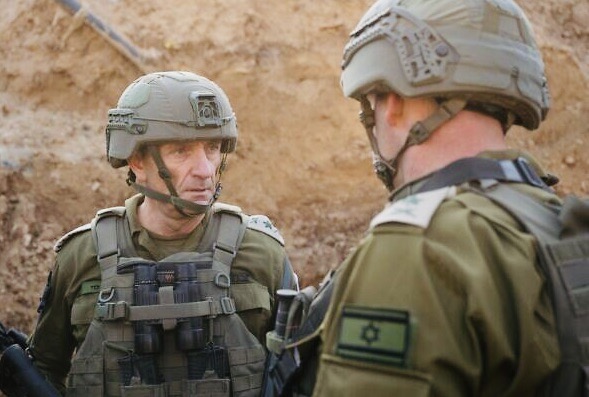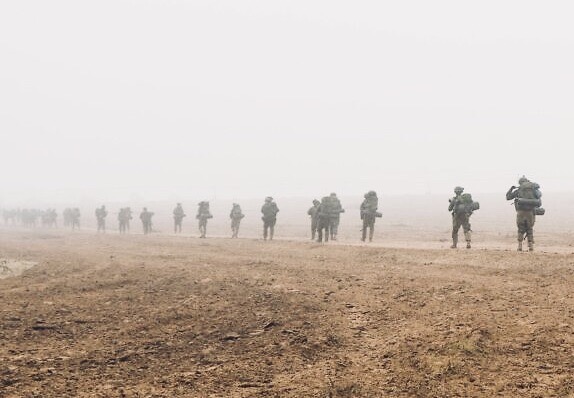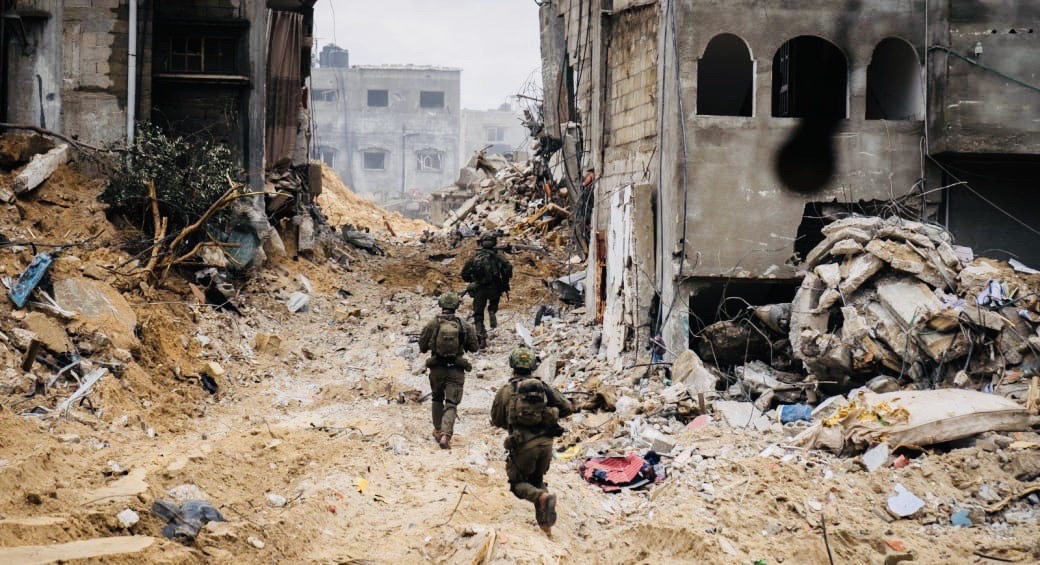Prime Minister Benjamin Netanyahu finally released a plan for post-war Gaza on February 23, but it was like old wine in a new bottle.
Nearly four months after Israel launched a ground invasion of the Gaza Strip, following Hamas’ massacre of 1,200 Israelis and foreigners in southern Israel on October 7, Netanyahu belatedly laid out his proposals in a one-page document rife with generalities.
The United States, Israel’s chief ally, gave it a lukewarm reception, while the Palestinian Authority condemned it.
The Biden administration, which has generally supported Israel’s military campaign in Gaza, had been prodding Netanyahu to lay out a vision for Gaza, which had been under the sway of Hamas since 2006.
Netanyahu was reluctant to release such a plan, fearing it could lead to the collapse of his far right-wing government, which holds a slim majority of seats in the Knesset. And he may have believed that an issue of this magnitude should be discussed only after the dust of the war had settled.
Until a few days ago, Netanyahu addressed it in scattered speeches in which he enunciated the broad outlines of Israeli policy. The thrust of his thinking was clear. Israel would demilitarize and retain security control of Gaza for an indefinite period of time. The Palestinian Authority, which rules parts of the West Bank, would not administer Gaza. Israel would establish narrow buffer zones along its border with Gaza and Gaza’s frontier with Egypt.

Pressured by the United States and two members of the war cabinet — Benny Gantz and Gadi Eisenkot — to summarize his ideas in one sweeping proposal, Netanyahu finally relented.
The document, titled The Day After Hamas and grounded in principles generally supported by the Israeli public, is supposed to be a blueprint for future discussions about managing Gaza after the cessation of hostilities.
It was released on a very eventful day.
Israeli, U.S., Egyptian and Qatari officials resumed negotiations over the release of hostages and a possible ceasefire.

U.S. Secretary of State Antony Blinken, in a reversal of an American change of policy that had been enunciated during the presidency of Donald Trump, announced that the United States would henceforth regard new Israeli settlements in the West Bank as “inconsistent with international law.”
He made this announcement a day after the Israeli government disclosed that more than 3,000 housing units would be built in three settlements: Ma’ale Adumim, Kedar and Efrat. Finance Minister Bezalel Smotrich described it as “an appropriate Zionist response” to a terrorist attack near Jerusalem during which three Palestinian terrorists killed an Israeli man and wounded eleven others.
Settlement expansion has been a leitmotif of Netanyahu’s philosophy. Last year, 12,349 new housing units in West Bank settlements, a record number, advanced through the planning process, compared with 4,427 in 2022.
The document also states that the Israeli armed forces will continue fighting until Israel’s primary war aims are achieved. These objectives are fourfold: the destruction of Hamas’ military capabilities, the removal of its ability to threaten Israel militarily, the elimination of Hamas as Gaza’s governing authority, and the return of hostages abducted on October 7.

At this point, no one really knows when the current war will end. As Netanyahu, his key ministers and the chief of staff of the armed forces, General Herzi Halevi, have said again and again, this is a protracted conflict that may well go on for many more months, if not longer. Hamas is a determined and resilient enemy that has no intention of surrendering. Since October 27, 240 Israeli soldiers have been killed in the campaign to dislodge Hamas.

In accordance with Netanyahu’s views, the document envisions Israeli security control “over the entire area west of Jordan to prevent the strengthening of terrorist elements in the (West Bank) and the Gaza Strip and to thwart threats from them towards Israel.” This would effectively resurrect Israel’s occupation of Gaza and grant Israel unlimited freedom to launch military operations there.
No mention is made of resettling Gaza, from which Israel unilaterally withdrew in 2005, or permitting settlers to return to their former homes.
The document regards the creation of two buffer zones as essential for Israel’s security. The first one, along a sliver of land just inside Gaza, is supposed to ensure that an assault on the scale of October 7 does not happen again. The second one would run along the 14-kilometer length of the Philadelphi Corridor, which separates Gaza from Egypt.
In reflection of Netanyahu’s opposition to a two-state solution, the document omits the possibility of a political horizon for the Palestinians and rejects international demands for a permanent settlement of the Palestinian question. This matter should be resolved without preconditions and only through direct negotiations between the parties, the document says. It states that Israel would reject the unilateral recognition of Palestinian statehood, which would be seen as a “reward for terror.”
The Palestinian Authority, though unmentioned in the paper, is not explicitly ruled out as Gaza’s future governing body. In vague and nebulous language, it says that Gaza would be governed by “local stakeholders with managerial experience” who have no ties to “countries or entities that support terrorism.”
The reconstruction of Gaza can only begin after it has been demilitarized and deradicalized, and a “rehabilitation plan” must be “financed and led by countries acceptable to Israel,” the document says.
As expected, the United States was not impressed by Netanyahu’s scheme. In a critique, Blinken said that any Israeli plan should align with three fundamental principles: Gaza should never again be a base or springboard for terrorism. Gaza should not be under Israeli occupation. Gaza’s territory should not be reduced.
U.S. National Security Council spokesman John Kirby said that President Joe Biden has been “consistently clear” with Israel about the “day after” scenario in Gaza.
Citing a major U.S. difference with Israel, Kirby said that “the Palestinian people should have a voice and a vote … through a revitalized Palestinian Authority.” In a reference to Israel’s proposal for a buffer zone along its Gaza border, Kirby said the U.S. does not “believe in a reduction of the size of Gaza …”
Alluding to an impending Israeli invasion of Rafah — Hamas’ last remaining urban stronghold — and the prospect of a mass flight of Palestinians into Egypt, Kirby said, “We don’t want to see any forcible displacement of Palestinians outside Gaza.”
In closing, he reiterated Washington’s aversion to Hamas: “Of course, we don’t want to see Gaza dominated or ruled or governed over by Hamas.”
The Palestinian Authority, which has had a contentious relationship with Israel since its formation three decades ago, blasted Netanyahu’s plan, claiming that its overarching purpose is “to perpetuate Israel’s occupation of Palestinian territories and prevent the establishment of a Palestinian state.”
It’s clear that Netanyahu’s conception of Gaza’s future is vastly at odds with that of the Palestinian Authority and the United States. Netanyahu and Biden may well be on a collision course.
Since Netanyahu’s plan is only a blueprint, subject to modification, he may be open to altering it and thereby staving off a serious clash with Israel’s most important friend and ally. Alternatively, in the interests of political survival, he may dig in his heels to forestall the dissolution of his government.
Long story short: Gaza’s future has yet to be determined definitively.
